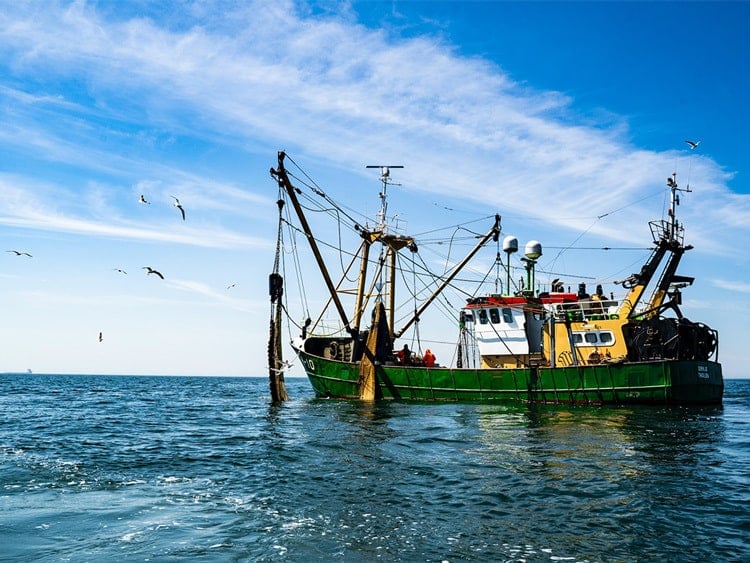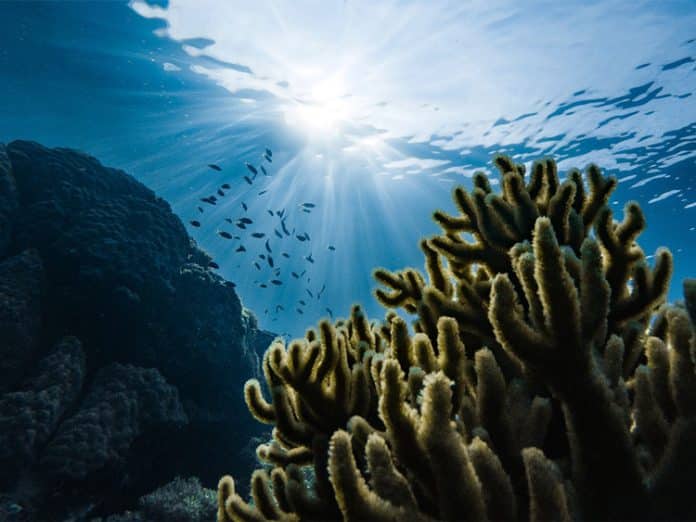Global average sea surface temperatures play a crucial role in shaping climate patterns and marine ecosystems. These temperatures have reached record highs, which is impacting both the marine environment and the economy of the affected regions.
Recently, the World Metrological Organization (WMO) released a comprehensive assessment on the state of sea surface temperatures and their implications for our planet.
What are the reasons behind the widespread occurrences of recent marine heatwaves? To provide a deeper understanding, UNRIC spoke with Regina Rodrigues, a leading expert and professor in Physical Oceanography at the Federal University of Santa Catarina (UFSC).

Q: Regina, can you explain how marine heatwaves occur?
A: There are several mechanisms, one of which is the influence of currents. In certain cases, these events occur when currents bring abnormal warm water. However, according to our research, the most intense marine heatwaves are predominantly caused by the atmosphere. For instance, the phenomenon of atmospheric blocking* that you see in Europe during the summer, plays an important role in causing droughts and heatwaves on land.
*(Atmospheric blockings are generally associated with slow-moving, high-pressure systems that “block” westerly winds in the upper levels of the atmosphere, causing the normal eastward progress of weather systems to stall. A block can lead to long stretches of extreme heat in the summer or bitter cold in the winter.)
Q: How do marine heatwaves impact the ecosystem?
A: Marine organisms have a maximum and minimum temperature range within which they can live. During summer, these marine organisms are already in the upper limit of their survivable range. However, when a marine heatwave occurs, the temperature surpasses this limit.
In some cases, this can lead to mass mortality and in other instances, the organisms survive and resist the elevated temperatures. However, in these conditions the first thing a marine organism halts, to conserve energy conservation, is their reproductive process. If it’s a fish species of economic importance, you might not have the quota for the next year. There are therefore a lot of consequences.
The temperature itself could directly cause a disease that can kill the fish.
Another noticeable visual consequence is the increased vulnerability of marine organism to diseases when they experience heat stress. For example, during the heat dome event in Canada in 2021, images showed US salmon without skin or with skin issues (such as a pink colour), which was caused by the heat in the water, making them vulnerable to fungus diseases. The affected salmon, migrating up the river to reproduce, could not make it and the salmon would sometimes die due to the disease.
The Coral Reef is probably the one that you hear about the most. Marine heatwaves kill the organism that make up the coral and cause bleaching.
Q: In the case of Spain, how are marine heatwaves affecting the country?
A: There is a persistent high-pressure system, known as atmospheric blocking, which reduces the winds and leads to dry conditions.
In the summer, you have a lot of solar radiation that not only heats up the land but also the ocean. As a result, you have these marine heatwaves in the Mediterranean that occur simultaneously with drought and heatwaves over land. This joint heatwave is what we call compound extremes.
Q: How will this weather phenomenon affect countries such as Spain in the future?
A: It’s going to be tough because the frequency of these events in the summer has been increasing in recent years, whereas before these heatwaves were occasional. In 2003, we experienced a massive heatwave which resulted in 30,000 deaths, and there was a marine heatwave at the same time. People didn’t pay too much attention to the ocean at that point. However, it was an extraordinary event.
Since 2018, Europe has been experiencing heatwaves every summer. Generally, if you look at Europe, particularly the southern part such as Spain, you are witnessing an extension of the Tropics. The Iberian Peninsula (Spain and Portugal) is further south, which I believe is a problem. Projections indicate that the situation will worsen in the future, and I believe Spain will really suffer.
The fishing industry is very significant in Spain, and water scarcity is another big challenge.
Q: What effects does Saharan Dust have on ocean warming, specifically in the Mediterranean and Atlantic?
A: Saharan dust helps to keep the heat down. Typically, during the summer, winds, also known as atmospheric circulation, bring a lot of dust into the atmosphere. This dust provides protection from the sun, like a small cloud, and acts as a form of “evaporative cooling” on the earth system. This year, we experienced unusually weak winds in the North Atlantic, particularly near Europe. As a result, these weak winds inhibited the flow of Saharan dust, which acts as a cooling factor together with evaporative cooling. This is why we experienced the exceptionally high ocean temperatures.
Q: How long do heatwaves last and are heatwaves becoming longer now?
A: Heatwaves can vary in duration. You have short-term heatwaves that last five to 10 days, as well as persistent heatwaves. Projections from our studies indicate that heatwaves are going to be longer in the future. The blocking systems in Europe are also getting longer. Previously, a heatwave on land (using present-day analogies) would last for two to three days. However, now we are experiencing heatwaves that last for one week to 10 days.

Q: Why is this happening?
A: Atmospheric systems have become larger and more persistent. The longer these atmospheric systems persist, the longer the duration of marine heatwaves and heatwaves on land, which contribute to drought conditions. Climate change is one factor that leads to the lengthening of heatwaves.
Q: Tell us more about the effect global warming has had on the ocean?
A: 90% of additional heat trapped by our emissions is absorbed by the ocean. An astonishing 90%!
Water possesses an incredible capacity to absorb heat, and that is what is occurring. If the ocean did not absorb all this heat, we would find ourselves in an even direr situation. That is why we currently just have a global [atmospheric] temperature increase of 1.1 to 1.2 degrees.
This is why we say that global warming has reached 1.2 degrees above pre-industrial levels. We are referring to the average temperature of the atmosphere at sea level. The increase of only 1.2 degrees is attributable to the fact that 90% of the heat is going to the ocean.
The ocean is helping us reduce global warming. However, it comes at a significant cost to the ocean.
The organisms in the marine ecosystem have not had the time to adapt to this temperature increase. The species are unable to keep up with the rapidity of climate change.
Q: This summer, Europe had extreme weather phenomena, with soaring heat in the Mediterranean and rain and storms in other regions. Is it linked to the ocean getting warmer?
A: It can be attributed to climate change in some ways. This is what we scientists refer to as the intensification of the hydrological cycle, which is a consequence of climate change. In areas where it’s warm and dry, evaporation increases, and as a result leads to drier conditions.
Areas with high moisture will likely get more wet. This is because warmer temperatures have the capacity to hold more moisture. What we are witnessing in Spain and Europe is that the dry season is becoming drier and longer. When it rains, it results in torrential rain within a short period of time.
This situation has severe implications for land ecosystems, humans and agriculture. The prolonged dry season is detrimental, as when it rains you have torrential downpours.
Q: Are we still able to do something to stop this process?
A: Yes we still can. Net zero is important, particularly for the ocean. However, there is no other way but to stop emissions. Unfortunately, even if we eliminate our emissions now, the observed heat in the ocean will persist for a long time. Even if we achieve zero emissions, the heat will return. There will be a period where we will experience fluctuations, going above and then returning below the desired target.
The ocean plays a significant role, as it absorbs a considerable amount of heat. Subsequently, once we stop emissions, an equilibrium will gradually be established, leading to the eventual release of some of the absorbed heat back into the atmosphere.
There are two aspects. Firstly, even if we stop emissions now, the ocean will continue to absorb the excess heat and release back some of that heat. This in not beneficial for us but it’s the reality and the best action we can take. The urgency to act is evident, as if we don’t stop emissions as soon as possible, the situation will become more complex. Eventually at some point the ocean will reach the limit of its ability to absorb heat and is going to stop. I hope that we don’t arrive at that point because then we’re really going to be in trouble.
Further information:
World Meteorological Organization (WMO)
Leading ocean scientists assess the latest impacts of a warming ocean

